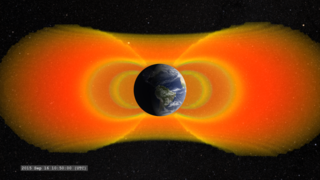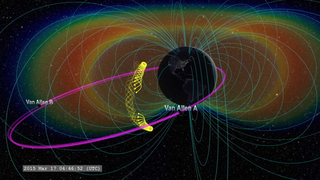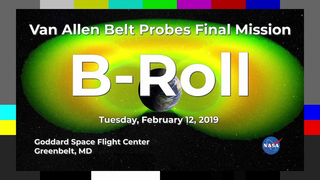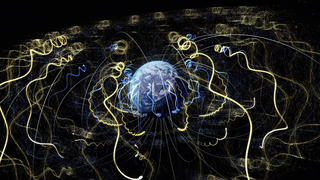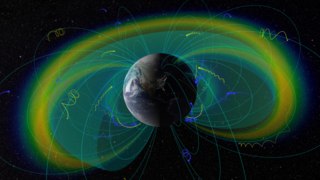Earth
Sun
ID: 12543
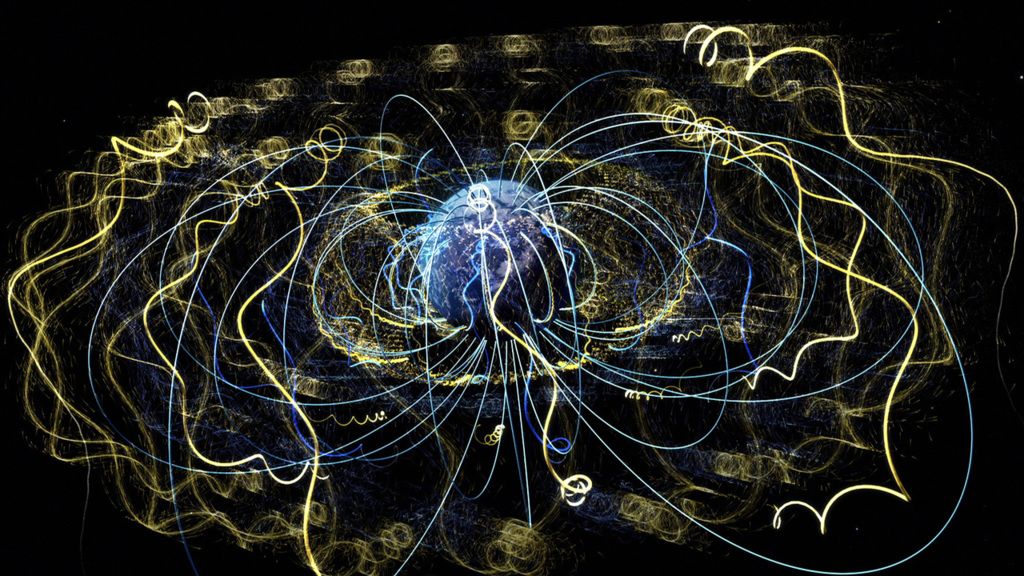
Two doughnut-shaped regions of charged particles encircle our planet. These regions, called the Van Allen radiation belts, were discovered more than 50 years ago, but their behavior is still not completely understood. The belts are made of protons and electrons from the solar wind and cosmic rays that are captured by Earth's magnetic field. Some of these particles move very fast, but observations from NASA’s two Van Allen Probes show that the fastest, most energetic electrons in the inner radiation belt aren’t present as much of the time as scientists thought. That means there typically isn’t as much radiation in the inner belt as previously assumed — good news for spacecraft at risk of radiation damage when flying through that region of near-Earth space. The Van Allen Probes, specifically designed to be immune to this type of radiation, plunge through the radiation belts up to six times a day to study the physical processes that add and remove electrons from the region. The Van Allen belts are a crucial part of a larger space weather system that stretches from the Sun to Earth and beyond. Watch the videos to learn more.


The Electron Beltway



Source Material
Related Stories
For More Information
Story Credits
Lead Visualizer/Animator:
Tom Bridgman (Global Science and Technology, Inc.)
Lead Producer:
Genna Duberstein (USRA)
Lead Scientists:
Seth Claudepierre (The Aerospace Corporation)
Shrikanth G. Kanekal (NASA/GSFC)
Dan Baker (University of Colorado)
Lead Writers:
Mara Johnson-Groh (Wyle Information Systems)
Micheala Sosby (NASA/GSFC)
Tom Bridgman (Global Science and Technology, Inc.)
Lead Producer:
Genna Duberstein (USRA)
Lead Scientists:
Seth Claudepierre (The Aerospace Corporation)
Shrikanth G. Kanekal (NASA/GSFC)
Dan Baker (University of Colorado)
Lead Writers:
Mara Johnson-Groh (Wyle Information Systems)
Micheala Sosby (NASA/GSFC)
Please give credit for this item to:
NASA's Scientific Visualization Studio
NASA's Scientific Visualization Studio
Short URL to share this page:
https://svs.gsfc.nasa.gov/12543
Keywords:
SVS >> HDTV
SVS >> App
NASA Science >> Earth
NASA Science >> Sun
https://svs.gsfc.nasa.gov/12543
Keywords:
SVS >> HDTV
SVS >> App
NASA Science >> Earth
NASA Science >> Sun
